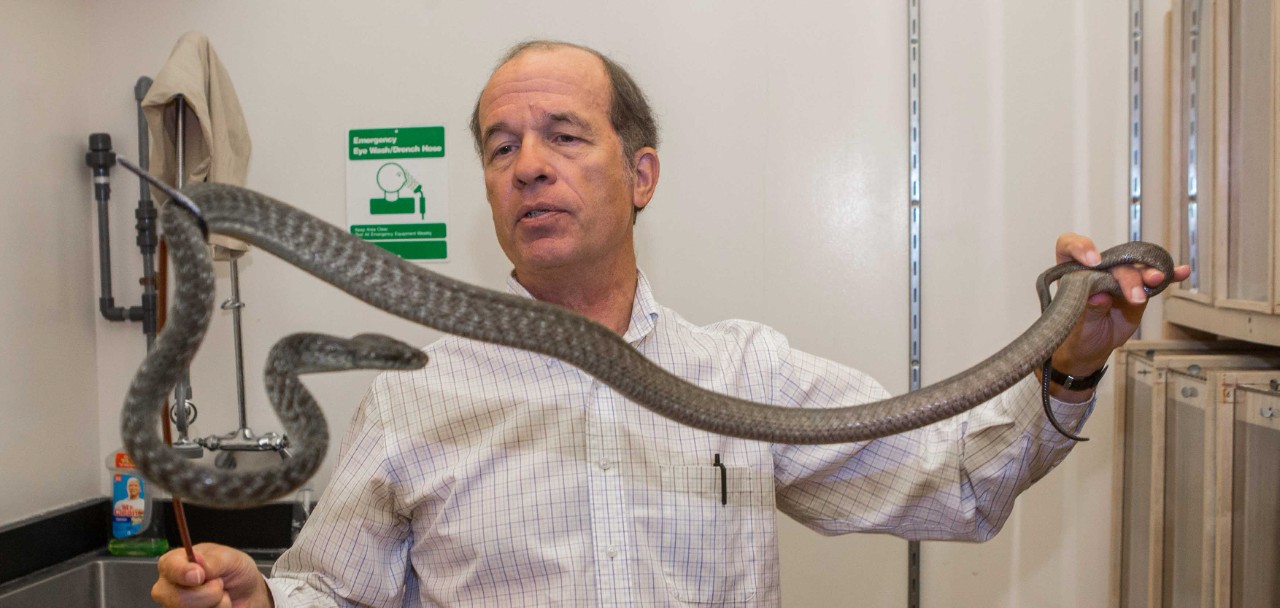
Newsweek: UC snake research fit for Halloween
UC biologist Bruce Jayne studied snakes that rip apart their prey alive
Newsweek turned to University of Cincinnati biologist Bruce Jayne for a Halloween feature about a ghastly creature that rips its prey apart alive.
Jayne first described the unique hunting methods of Asia's cat-eyed water snakes, which look for molting soft-shelled crabs it can rip and devour in pieces.
"Like a high-end chef choosing the finest meat, these snakes will only attack prey when they are ripe for the picking, around 10 to 15 minutes after the animals have molted their shells," Newsweek wrote.
"The Halloween-like surprise is the snake's ho-hum appearance and yet savage behavior!" Jayne told Newsweek.
Jayne used infrared cameras to capture the behavior unsettlingly up close. Like the first victims in a slasher movie, the crabs stand no chance.
"Just as you can't judge a book by its cover, you would never guess that this little snake with such a mundane appearance was such a ferocious and accomplished predator," Jayne told Newsweek.
Featured image at top: UC professor Bruce Jayne holds a brown tree snake. Photo/Joseph Fuqua II/UC Creative + Brand
More UC snake research

UC professor Bruce Jayne holds a vine snake. Photo/Joseph Fuqua II/UC Creative + Brand
UC Magazine: Whither the Slither?
National Geographic: These snakes can jump and scientists want to know why
New York Times: How the Snake Pours Its Way Across the Ground
UC Magazine: Snake Surprise!
National Science Foundation: Expert unlocks mechanics of how snakes move in a straight line
Related Stories
UC researcher develops at-home diagnostic test for endometriosis
April 21, 2025
Katherine Burns, a University of Cincinnati researcher who has endometriosis, speaks about her journey of developing a non-invasive diagnostic test for the condition.
UC celebrates Earth Day 2025 with award-winning publication
April 21, 2025
Earth Day celebrates its 25th anniversary this year. Since its inception, Earth Day has gone global, and with its adoption have come federal intuitions such as the EPA (Environmental Protection Agency) and policies familiar to most: the Clean Air, Clean Water and Endangered Species acts. This year, UC’s College of Arts and Sciences has reason to celebrate as well. It’s a regional win, capturing the reformation of Fernald, a former nuclear production facility located in northwest Cincinnati. Professor and environmental historian Casey Huegel has received numerous awards for his book, “Cleaning Up the Bomb Factory: Grassroots Activism and Nuclear Waste in the Midwest,” (Weyerhaeuser Environmental Books, 2024).
UC study examining overdose hot spots
April 21, 2025
WCPO covered a research collaboration between the University of Cincinnati and the Hamilton County Office of Addiction Response that takes a new approach to help combat the growing overdose crisis in the region.
